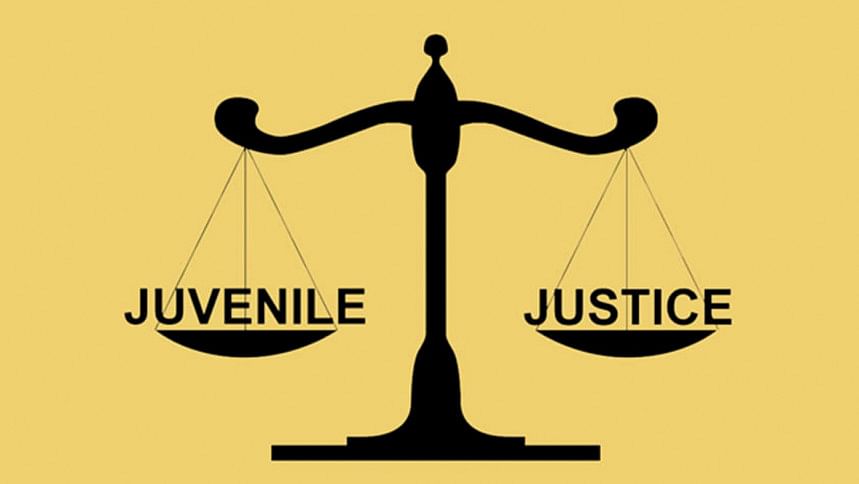Quota reform movement in context

Amid the quota reform protests, A juvenile court in Dhaka rejected bail petition of a 17 year old Dhaka College student Hasnatul Islam Faiyaz. Below is a general analysis on the legality of treating children in contact and in conflict with law.
Firstly, coming to the question of who a child is, section 4 of the Children Act 2013 categorises a child as anyone under the age of 18, which is consistent with the United Nations Convention on the Rights of the Child 1989 (CRC). The preamble of the Act also mentions that it was enacted to implement the CRC.
Section 3 of the Act stipulates that "notwithstanding anything contained in any other existing law, the provisions of this Act shall prevail." This overriding clause ensures the Act's primacy over all other laws concerning offenses committed by children and other specified matters within the statute. Moreover, section 17 of the Act provides that in any case where a child in conflict with the law or a child in contact with the law is involved under any law whatsoever, the children's court shall have the exclusive jurisdiction to try that case. The reality, however, paints a far different picture, showcasing a glaring disconnect between our law's noble intentions and its actual implementation.
The rights and legal safeguards guaranteed under the 2013 Act and the CRC are there for a reason. When these principles are violated, it serves as a stark reminder that even the most well-crafted laws are powerless without genuine commitment to their enforcement.
When a child is tried at a normal court as opposed to a children's court, it constitutes a direct violation of the Children Act. Additionally, by not transferring the case to the children's court, the court fails to adhere to the essential principles of child protection and justice. The overarching aim of the Children Act is to ensure that children in conflict with the law are treated with dignity and provided with the opportunity for rehabilitation, rather than punitive measures designed for adults. It is important to adhere to this principle as general courts are ill-equipped to address the unique needs and rights of a child.
Section 28 of the Act explicitly prohibits the publication of any material that could identify a child involved in judicial proceedings. Under the provisions of the Children Act 2013, in any case under trial before the children's court involving a child, no photograph or description of the child may be published in any print or electronic media or on the internet that could directly or indirectly identify the child, unless the court determines that such publicity will not harm the child's interests. Needless to say, when a child is not tried at a children's court, this provision is not complied with. As a result, it not only contravenes the protections outlined in the Children Act but also raises significant concerns about the treatment and rights of children within our legal system.
Our High Court Division (HCD) and Appellate Division (AD) of the Supreme Court play a crucial role in protecting children's rights and overseeing the juvenile justice process in the country. In numerous cases, the Supreme Court has actively contributed to the development of children's rights and ensured awareness of the judicial process. In Ridoy v State (Criminal Appeal No. 7533), the HCD, presided over by Justice Enayetur Rahim and Justice Mostafizur Rahman, identified several conflicting legal provisions between the Children Act 2013 and other significant legislations. These conflicts pertain to the cognizance, trial procedures, and bail hearings. Recognising the critical need for a coherent legal framework, the HCD recommended amendments to the Children Act 2013 to eliminate these contradictions and ensure the protection and fair treatment of minors. The HCD also issued seven directives for magistrates and children's courts to follow until the recommended legislative amendments are enacted to protect children's rights in the judicial system and highlight the judiciary's proactive role in advocating for legal reforms to improve child justice in Bangladesh.
In The Children Act 2013: A Commentary, Honorable Justice Imman Ali observed, "No child shall be arrested or detained under any law relating to preventive detention". At first, as per section 44(3) of the Act, the real age of the child needs to be determined. The same provision also mentions that no child shall be hand-cuffed. Section 52 of the 2013 Act highlights the need for special care and treatment of minors and outlines specific provisions for granting bail to children. If a non-adult is produced before the children's court, the court has to release him on bail or order his custody/detention in a safe home or a Child Development Centre.
The rights and legal safeguards guaranteed under the 2013 Act and the CRC are there for a reason. When these principles are violated, it serves as a stark reminder that even the most well-crafted laws are powerless without genuine commitment to their enforcement.
The writers are both graduates from Department of Law, University of Dhaka.

 For all latest news, follow The Daily Star's Google News channel.
For all latest news, follow The Daily Star's Google News channel. 



Comments